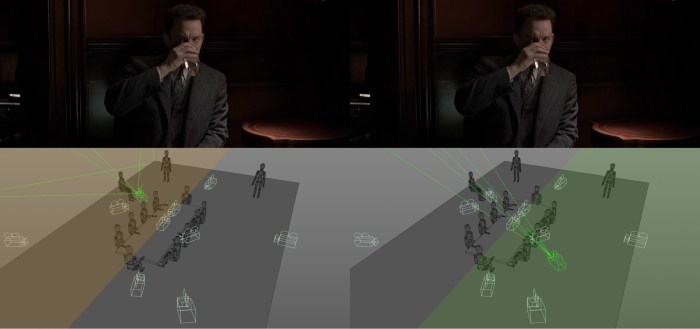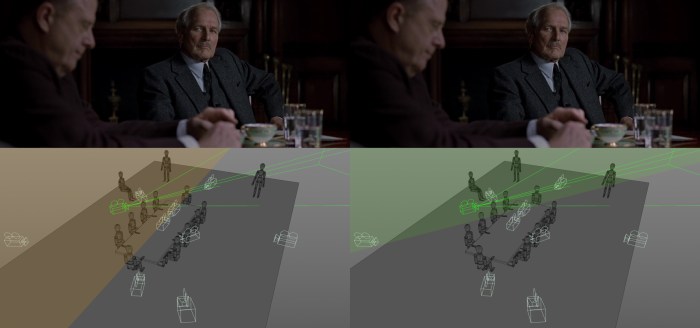If you try to say two or more things at once, usually you end up saying nothing, they say.. But what follows are examples of very effective storytelling, where sound effects were used to tell two things at the same time – well thought out and very cinematic, watch the examples below:
Great Gatsby

We can see the first gun shot, but the second one we can only hear. This is really powerful, because it combines sounds of splashing water as well as the gunshot itself. Nice, elegant and very effective example of killing two birds with one sound.
Godfather

This scene takes place in the Bronx. At the very beginning it is established, that somewhere in the neighborhood is an elevated train. We can hear sounds coming from the train several times during the dialogue between Michael and Solozzo. What follows now is an excerpt from article called Stretching Sound to Help the Mind See, written by Walter Murch for filmsound.org:
Sounds, however, that do not relate to the visuals in a direct way function at an even higher level of dimensionality, and take proportionately longer to resolve. The rumbling and piercing metallic scream just before Michael Corleone kills Solozzo and McCluskey in a restaurant in “The Godfather” is not linked directly to anything seen on screen, and so the audience is made to wonder at least momentarily, if perhaps only subconsciously, “What is this?” The screech is from an elevated train rounding a sharp turn, so it is presumably coming from somewhere in the neighborhood. But precisely because it is so detached from the image, the metallic scream works as a clue to the state of Michael’s mind at the moment — the critical moment before he commits his first murder and his life turns an irrevocable corner. It is all the more effective because Michael’s face appears so calm and the sound is played so abnormally loud. This broadening tension between what we see and what we hear is brought to an abrupt end with the pistol shots that kill Solozzo and McCluskey: the distance between what we see and what we hear is suddenly collapsed at the moment that Michael’s destiny is fixed.
Again, the sound here helps to establish the place/environment, but at the same time helps to convey what goes through Michael’s head.
Hesher

This scene was actually a theme of the very first article written for Cinema Shock, you can read more about this scene here, but just briefly: The sound (thunders and lightnings) describes how T.J. feels and at the same time, they work as a sound bridge to the following scene. This is genius! If you’re a filmmaker, I hope this article sparked some new ideas. I think trying to kill two birds with one stone is almost always a good idea. You can do it with sound, you can do it with camera or you can even try to combine camera movement with sound effect. P.S. I am currently working on a short project, where together with sound designer Matt Cavanaugh we try the last-mentioned: to combine a camera movement with sound effect. I’m looking forward to share it here in the near future!





